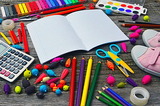
This resource is a set of math routines for Grade 3 Cluster 8.
- Subject:
- Mathematics
- Material Type:
- Activity/Lab
- Author:
- Drew Polly
- Date Added:
- 07/23/2020

This resource is a set of math routines for Grade 3 Cluster 8.

Gr 3 Cluster 8 Measurement Curriculum Night Brochure

This is Tools for NC Teachers. In this lesson, students develop a deeper understanding of perimeter by solving and discussing perimeter problems involving rectangles with missing sides.

This lesson is from Tools for NC Teachers. In this lesson, students develop a deeper understanding of perimeter by solving and discussing perimeter problems involving rectangles with missing sides. This is remixable.

This task is from Tools for NC Teachers. Students explore the dimensions of a carpet that is needed to cover a floor. This is remixable.

This lesson is from Tools for NC Teachers. Students complete a series of activities related to area and perimeter. It can be used at the start of Clusters 2 or 4. This is remixable.

This lesson is from Tools for NC Teachers. In this lesson, students explore the possible dimensions and areas of rectangles given a fixed perimeter. This is remixable.

This task is from Tools for NC Teachers. Students explore the area and perimeter of rectangles using grid (graph) paper. This is remixable.

This lesson is from Tools4NCTeachers. In this lesson, students will design a play area by dividing it into four sections. Students will decompose the total play area into parts by decomposing the length and width measures. Students will connect their drawing to the partial products strategy and area model for multiplication. This is remixable.

This task is from Tools for NC Teachers. Students consider a mathematical claim about how to find the volume of a rectangular prism. This is remixable.

This resource is from Tools4NCTeachers. In this lesson, students work with partners to measure different objects and then find the difference in the measurements. Remix this lesson to include extension ideas (e.g., games and or math stations).

This resource is from Tools4NCTeachers. In this lesson, students first estimate the size and distance between their own facial features and then draw a self-portrait based on their estimates. Next students accurately measure and draw the same features and then compare the results.